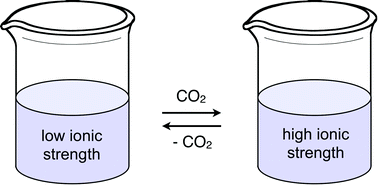Canadian scientists report using polyamine derivatives as switchable water additives to salt out water-miscible organic compounds.

The team found that alkylammonium bicarbonate salts derived from polyamines were particularly additives as they could provide solutions of greater ionic strength at lower loadings in water, and have developed a set of principles for the design of future switchable water additives.
This article is free to access until the 14th March 2012! Click on the link below to read more…
Design, synthesis, and solution behaviour of small polyamines as switchable water additives, Sean M. Mercer, Tobias Robert, Daniel V. Dixon, Chien-Shun Chen, Zahra Ghoshouni, Jitendra R. Harjani, Soran Jahangiri, Gilles H. Peslherbe and Philip G. Jessop, Green Chem., 2012, DOI: 10.1039/C2GC16240G
You may also be interested in these related articles, free to access for 2 weeks…
Tertiary amine solvents having switchable hydrophilicity, Philip G. Jessop, Lisa Kozycz, Zahra Ghoshouni Rahami, Dylan Schoenmakers, Alaina R. Boyd, Dominik Wechsler and Amy M. Holland, Green Chem., 2011, 13, 619-623
A solvent having switchable hydrophilicity, Philip G. Jessop, Lam Phan, Andrew Carrier, Shona Robinson, Christoph J. Dürr and Jitendra R. Harjani, Green Chem., 2010, 12, 809-814
Stay up-to-date with the latest content in Green Chemistry by registering for our free table of contents alerts.










